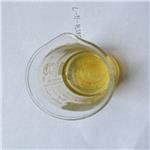Pinitol Oil: Sources, Multifaceted Applications and Toxicity
General Description
The awareness in the consumption of plant-based food has gained attention in the recent years. Phytochemicals are thought to play a critical role in health promotion and in the prevention and management of chronic diseases. These compounds have reported to produce little or no side effects and are thus significantly used in treating various ailments. Pinitol oil is the chief active compound found in soy and soy products. Several studies have shown the health benefits of pinitol oil such as antioxidant, anti-diabetic, anti-inflammatory and anticancer properties. This article will introduce its sources, applications and toxicity.

Figure 1. Pinitol oil
Sources
Pinitol oil, a complex and versatile compound, primarily originates from two distinct sources, each contributing to its unique properties and wide-ranging applications. The first source is the high temperature distillation of turpentine residues, a byproduct of the paper manufacturing process where cellulose is extracted from wood. This method harnesses the chemical richness of turpentine, transforming it into Pinitol oil through controlled heating, thereby recycling what would otherwise be an industrial waste product. The second source involves the catalytic hydration of pinenes, which are organic compounds found abundantly in the essential oils of pine trees and other coniferous plants. This process chemically modifies pinenes by adding water in the presence of a catalyst, converting them into Pinitol oil. Both sources exploit naturally occurring resources, either as byproducts of industrial processes or directly from plant materials, making Pinitol oil a sustainable option for various applications across industries. 1
Multifaceted Applications: From Fragrance to Industrial Use
Pinitol oil, a complex combination of terpenes, has a wide array of applications due to its versatile properties. It is extensively used as an odorant for its strong and refreshing scent, making it a popular choice in fragrances, deodorants, and polishes. Its effectiveness as a disinfectant and sanitizer positions it as a crucial ingredient in cleaning products for both commercial and residential use, including soaps and surface cleaners. This antimicrobial property extends to its use as a microbiocide, virucide, and insecticide, offering solutions for indoor pest control and cattle sprays. In the industrial sector, Pinitol oil serves as a penetrant and wetting agent, enhancing the efficiency of various processes such as ore flotation in metal extraction, where it aids in the separation of metals like copper, lead, and zinc. Its role as a preservative is vital in the textile and paper industries, where it helps in prolonging the life of products. Additionally, Pinitol oil is used in the production of perfumery-grade compounds such as terpineol, anethole, fenchone, and camphor, showcasing its importance in the manufacture of high-quality fragrances. The versatility of Pinitol oil, derived from either the high temperature distillation of turpentine residues or catalytic hydration of pinenes, is further evidenced by its application in laboratory settings as a reagent, highlighting its broad utility across various domains. 2
Toxicity
Pinitol oil is a mixture of variable composition with alpha-terpineol being the primary active ingredient; Numerous reports of human ingestion poisonings; A 13-week dermal study of rats produced a systemic NOAEL of >226 mg/kg/day (highest tested dose) and a dermal NOAEL of <50 mg/kg/day (desquamation, scabbing, and erythema); Effects to fetuses observed at doses overtly maternally toxic in rats dosed by gavage on days 6-15 of gestation (maternal and developmental NOAEL’s are 50 mg/kg/day); No evidence of mutagenicity; [HSDB] A skin irritant; Inhalation of vapors can cause headache, confusion, and respiratory distress; Ingestion can irritate entire digestive tract and may cause kidney injury; [CAMEO] Eye irritation lasts up to 16 days; A moderate skin irritant; A developmental toxicity study of rats produced maternal effects and malformations with a NOAEL of 600 mg/kg/day; Human incidents of irritation, rash, allergic reactions, blurred vision, and respiratory symptoms are reported mainly after ingestion; Ingestion of large quantities of pine needles in late pregnancy causes premature parturition in several animal species; [REPROTOX] A severe skin irritant; Causes excitement, ataxia, and headache in man at oral dose of 4,700 mg/kg; Causes other changes in lungs and liver, gastritis, somnolence, and ataxia in oral lethal-dose studies of rats; [RTECS] The pine tree is one of the "Plants Causing Allergic Contact Dermatitis." 2
Reference
1. National Center for Biotechnology Information (2024). PubChem Compound Summary for CID 168009820.
2. Pine oil. Haz-Map, Information on Hazardous Chemicals and Occupational Diseases. 2022. CAS Number: 8002-09-3.
You may like
Related articles And Qustion
Lastest Price from Pinitol oil manufacturers

US $0.00/kg2025-03-07
- CAS:
- 8002-09-3
- Min. Order:
- 1kg
- Purity:
- 0.99
- Supply Ability:
- 20tons

US $6.00/kg2024-11-07
- CAS:
- 8002-09-3
- Min. Order:
- 1kg
- Purity:
- 90%
- Supply Ability:
- 200000



